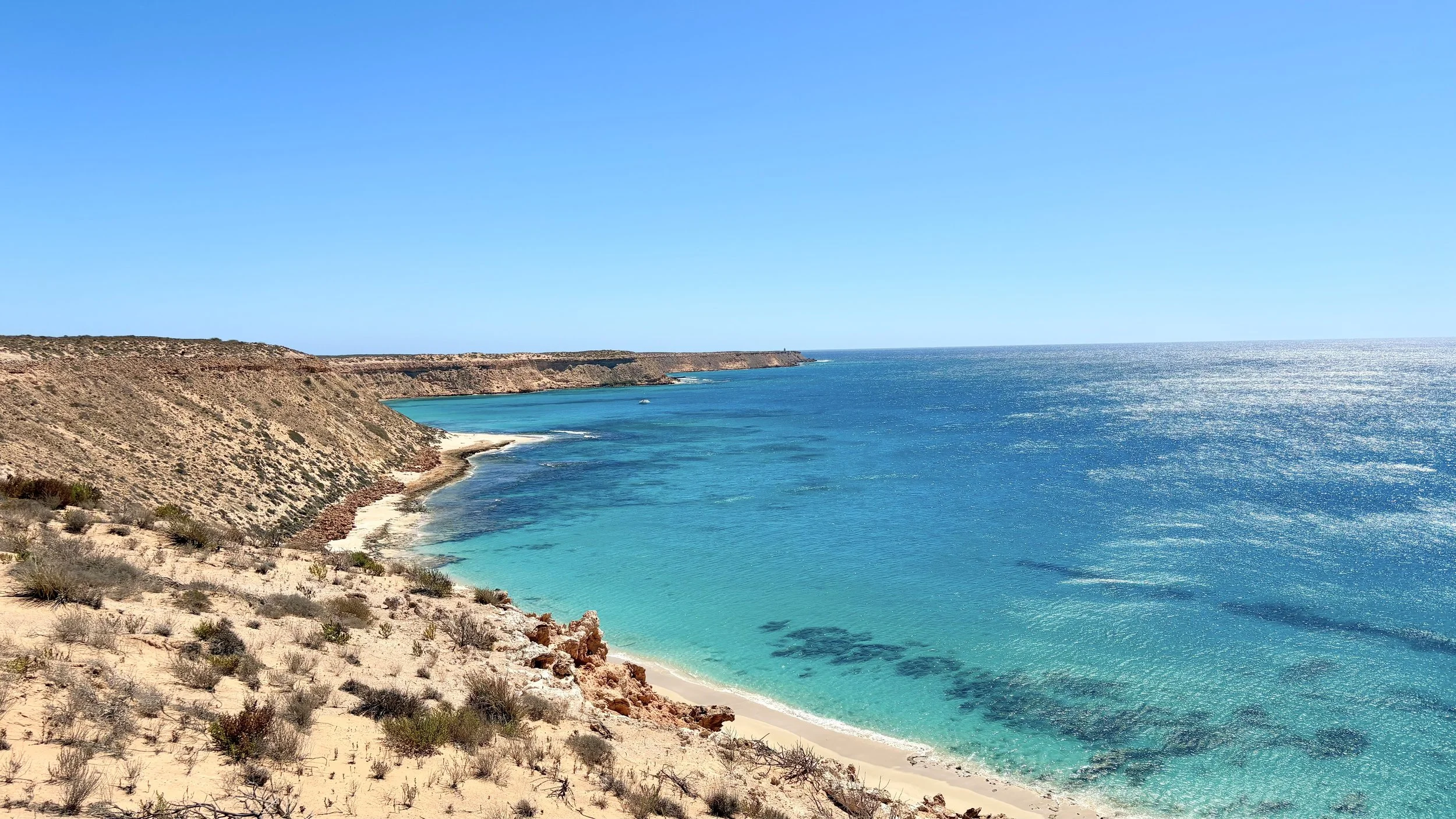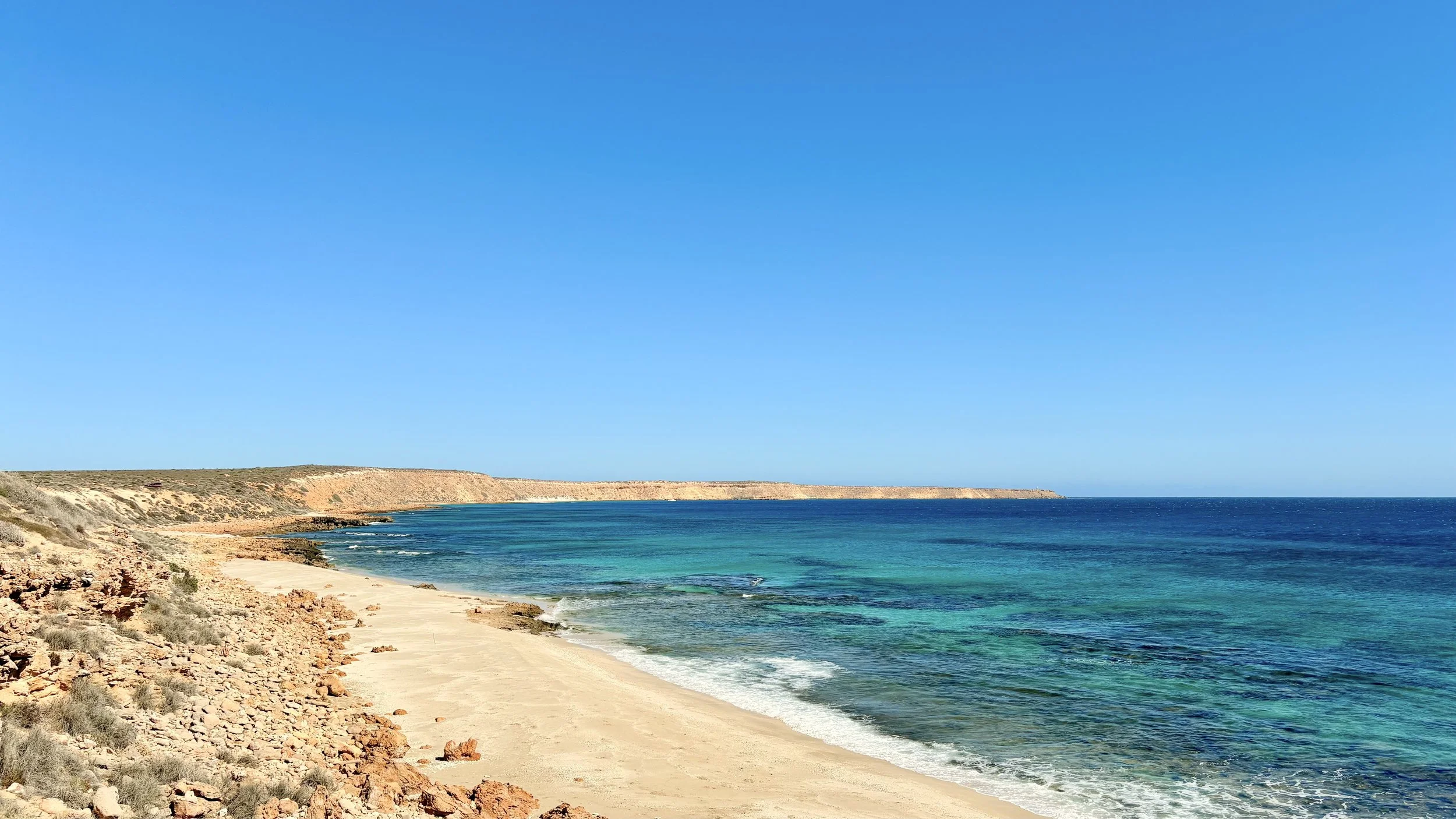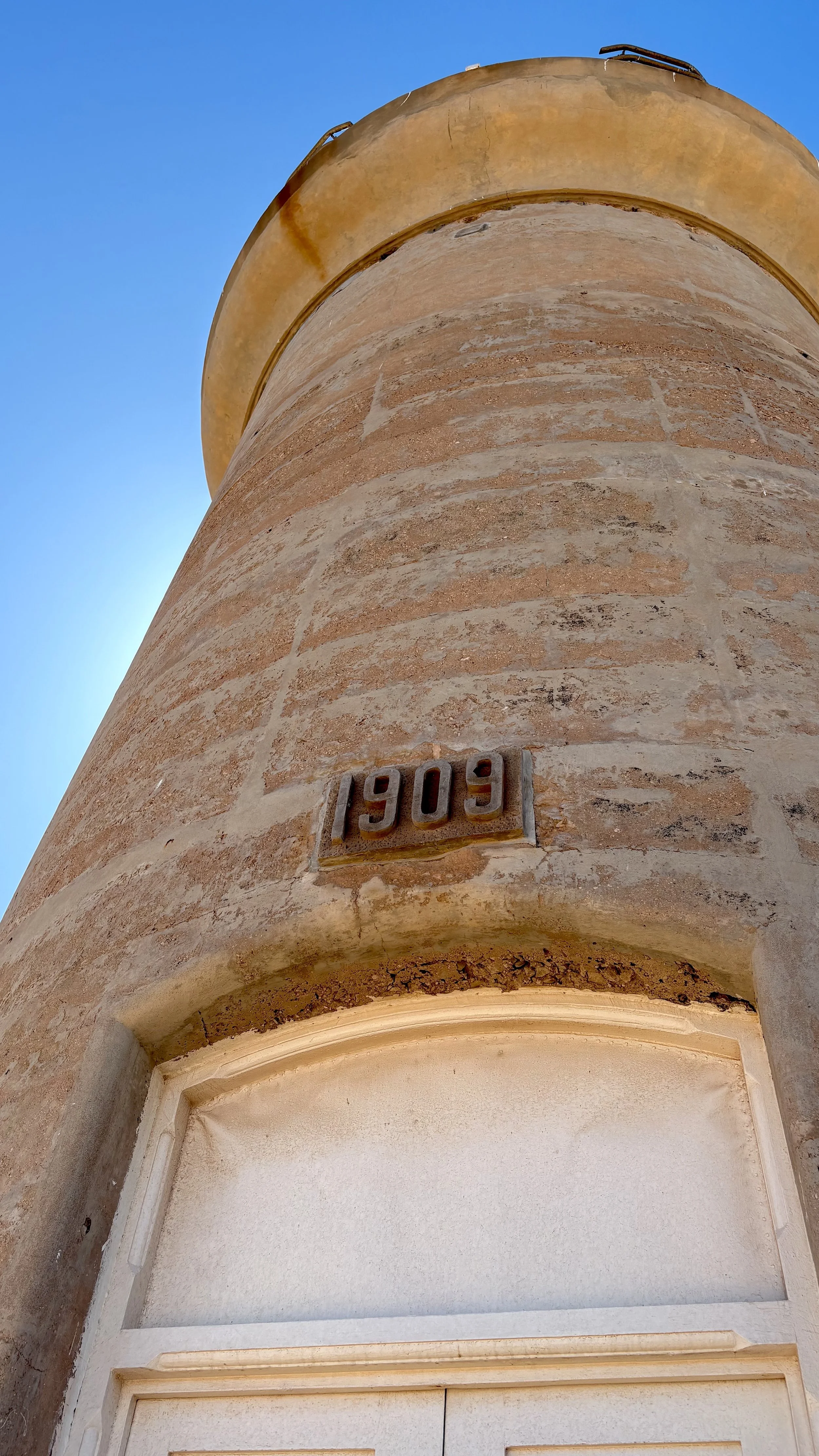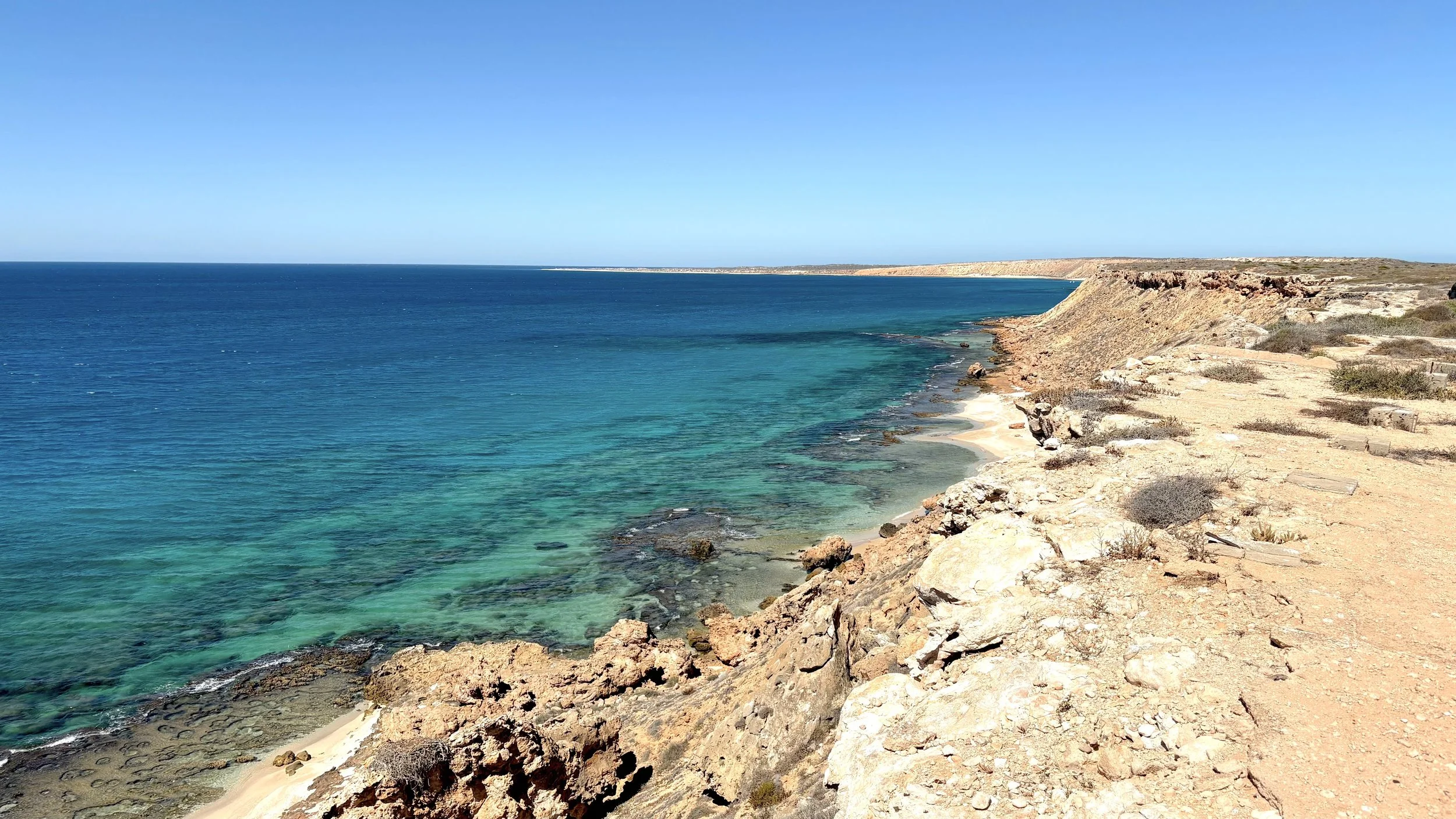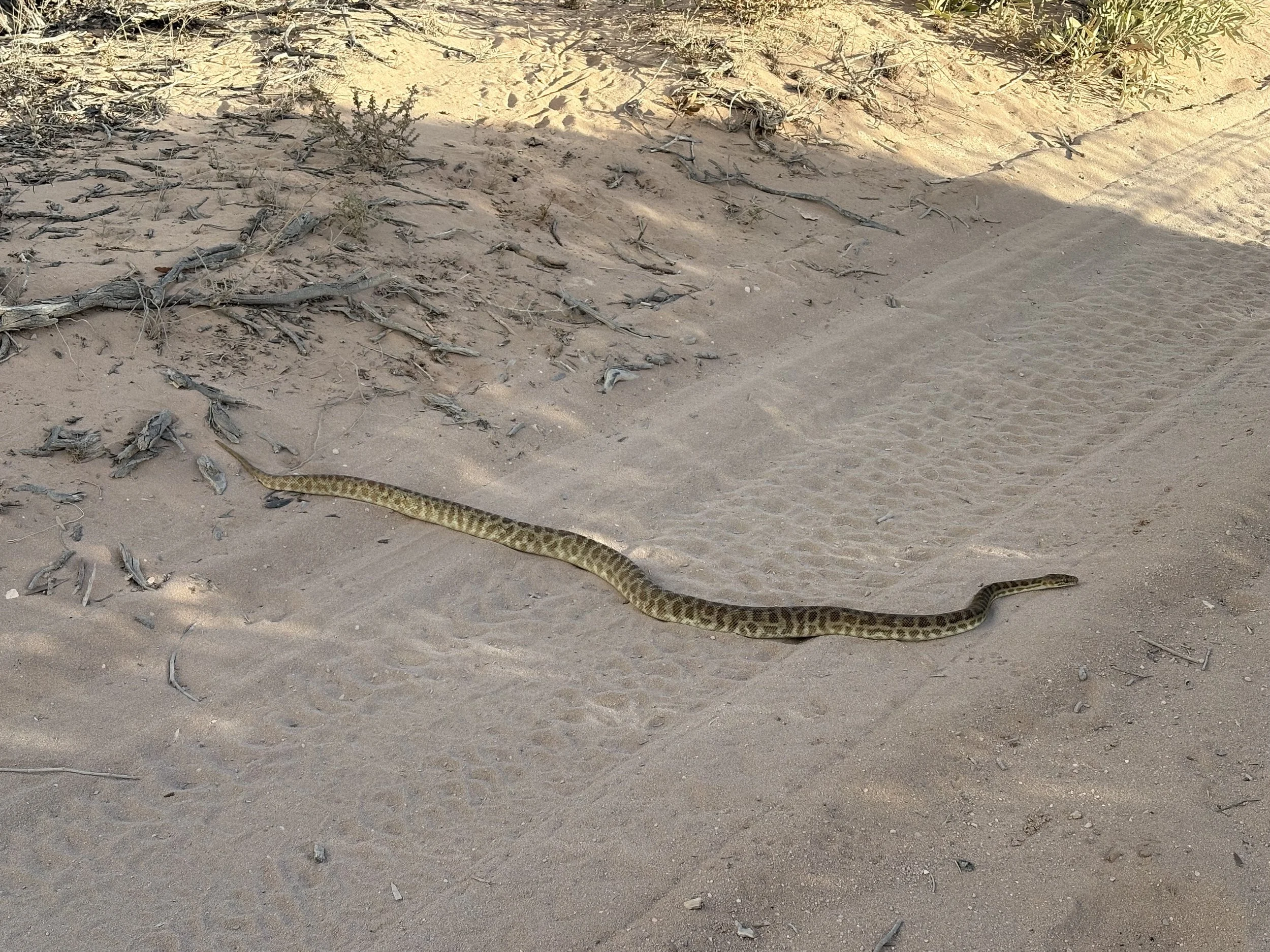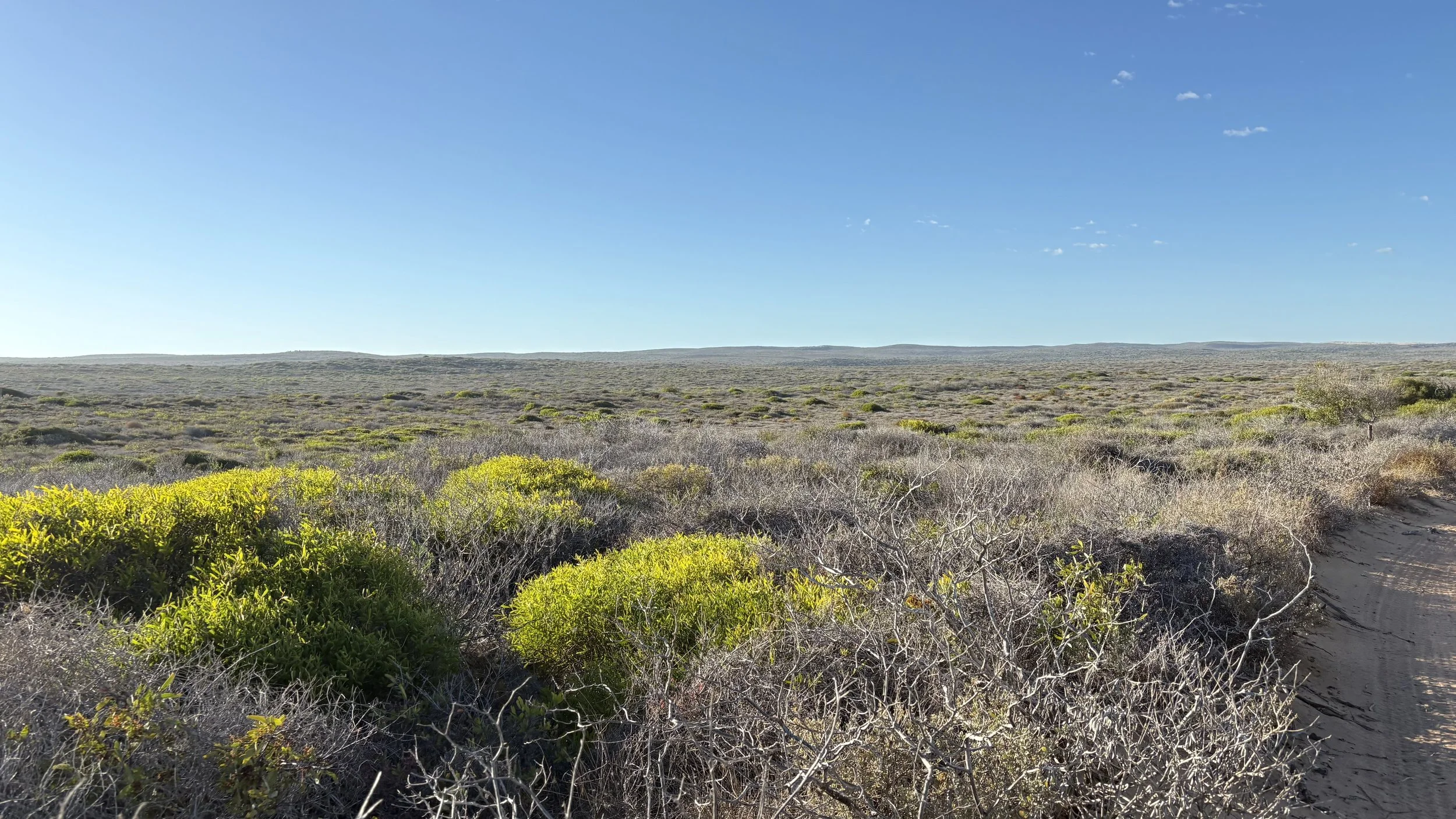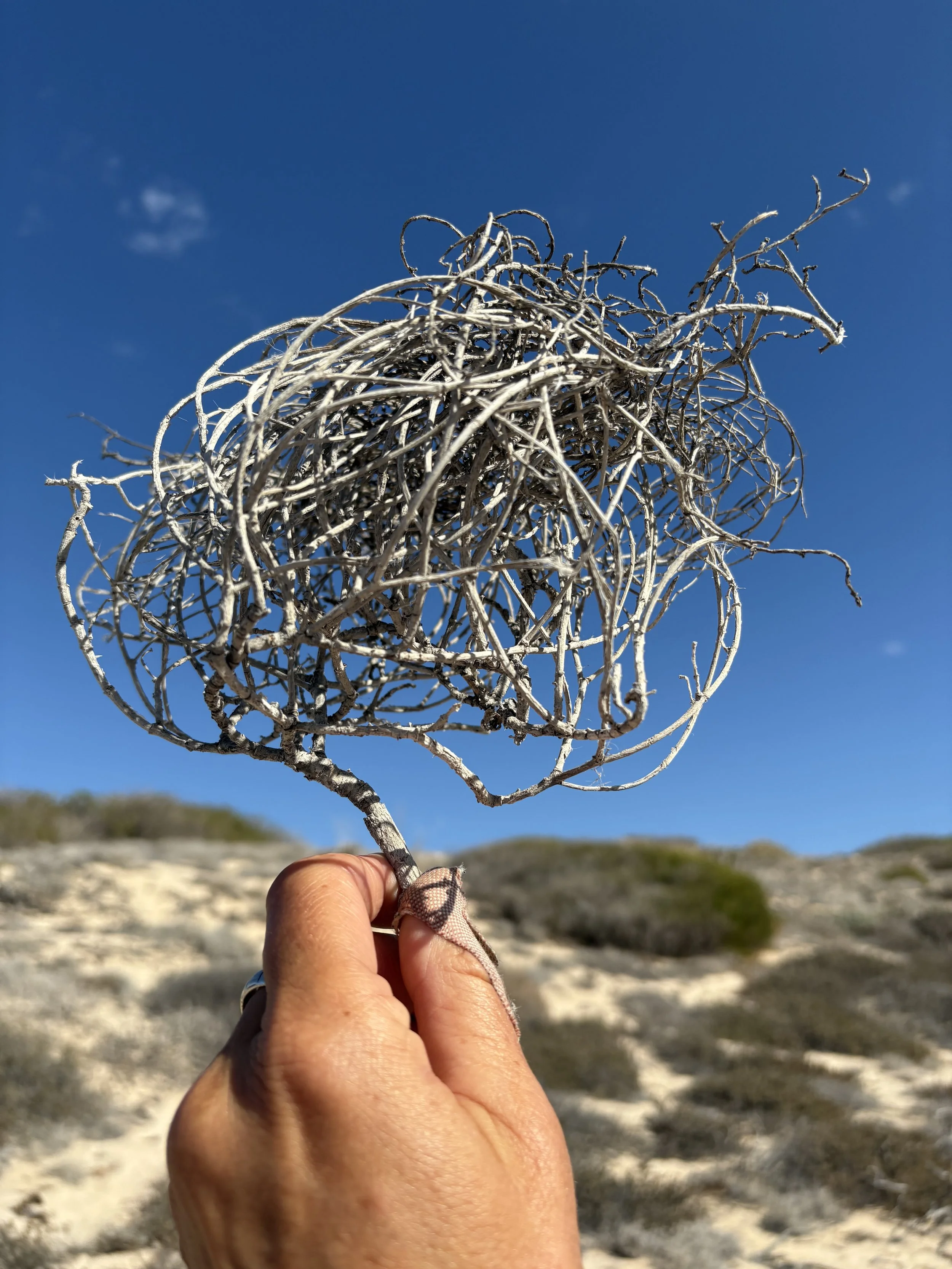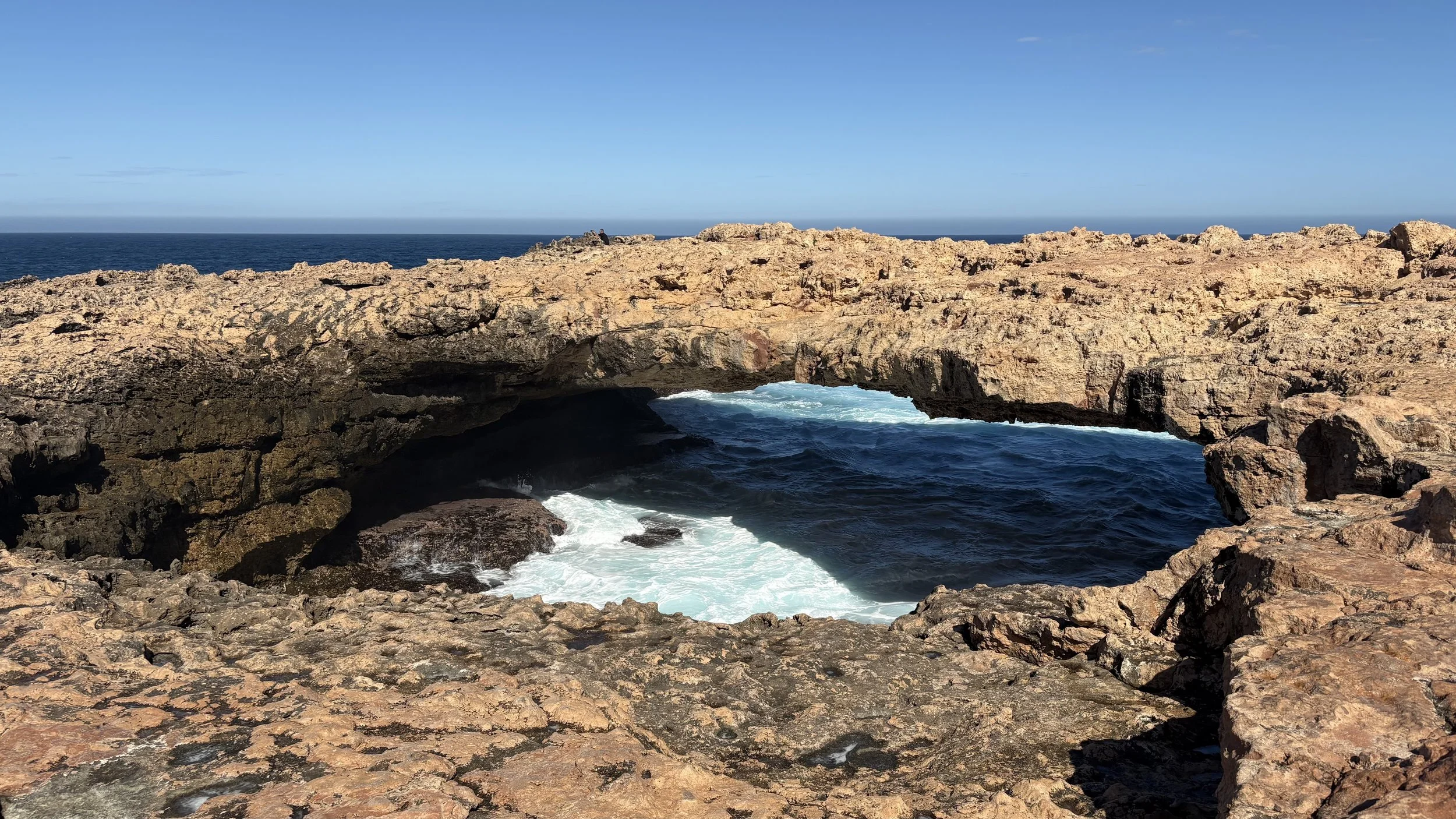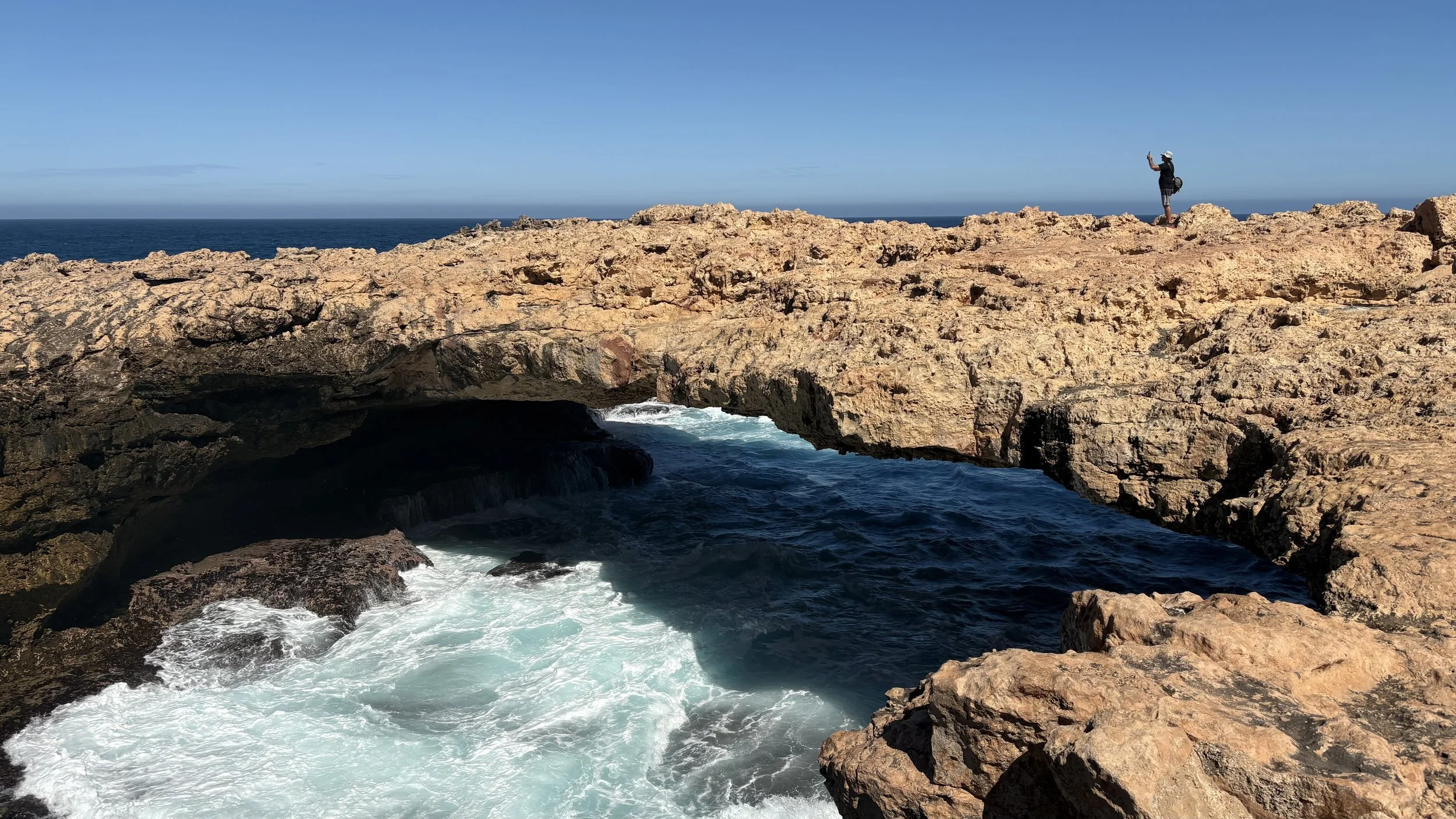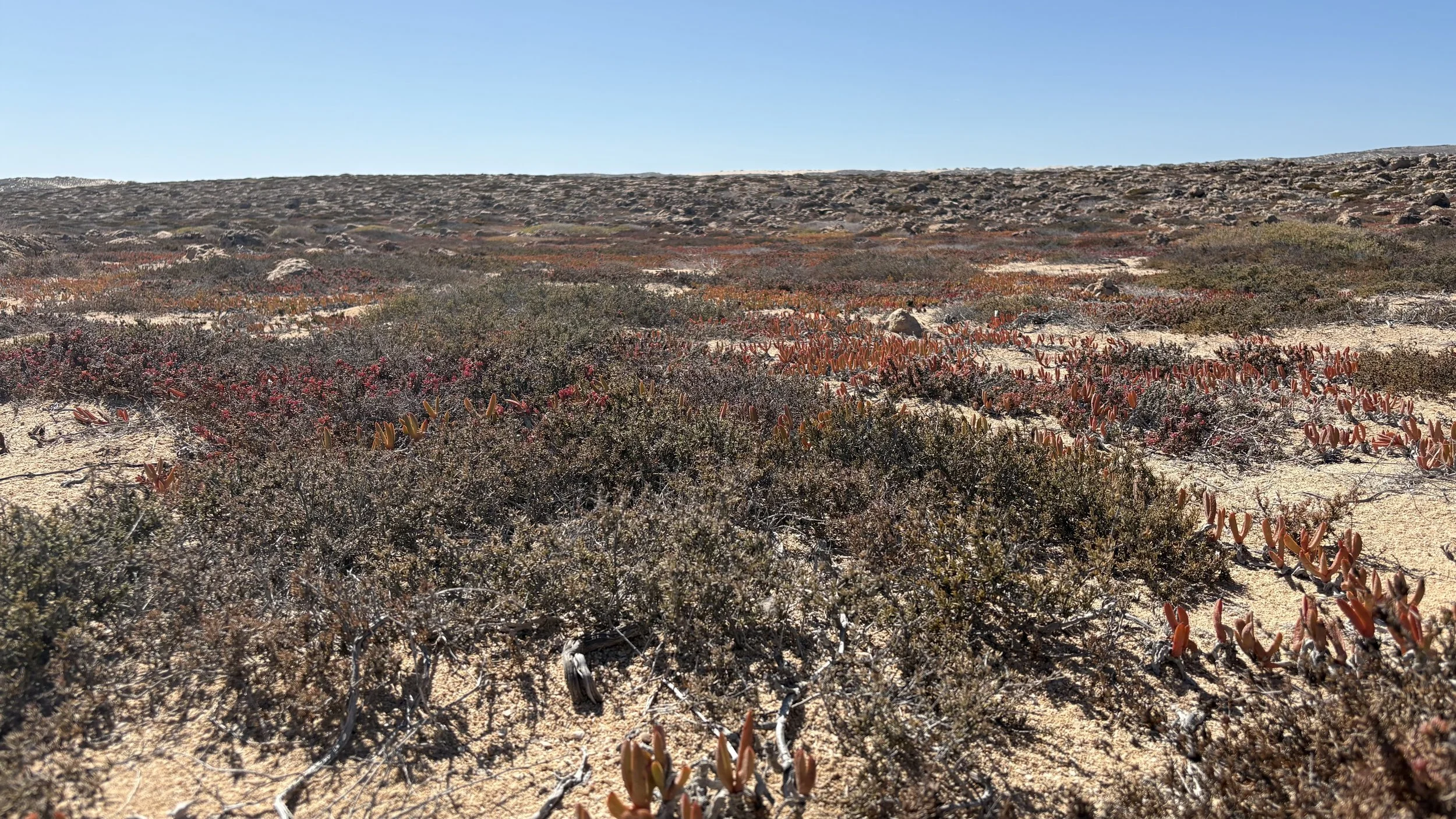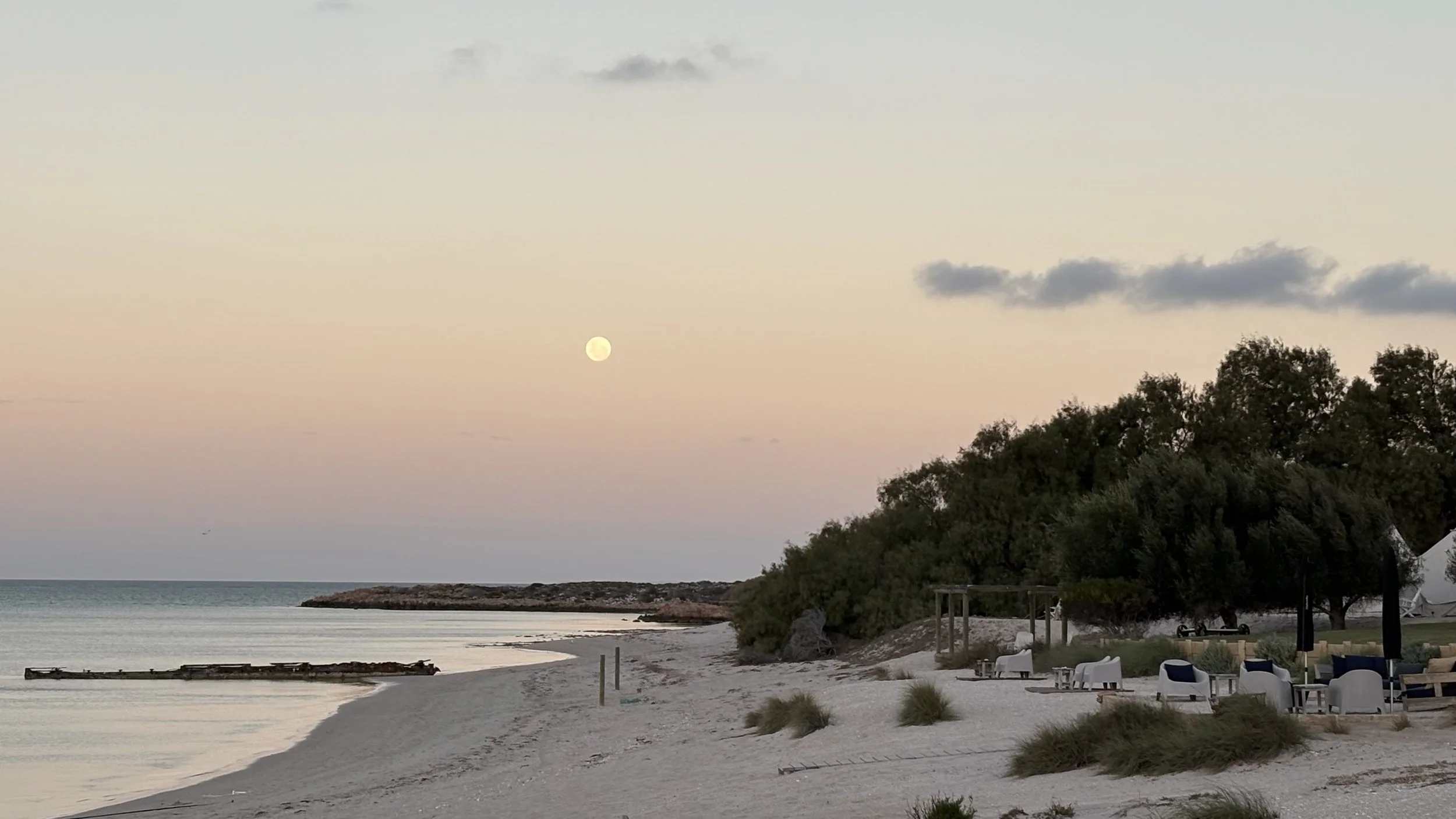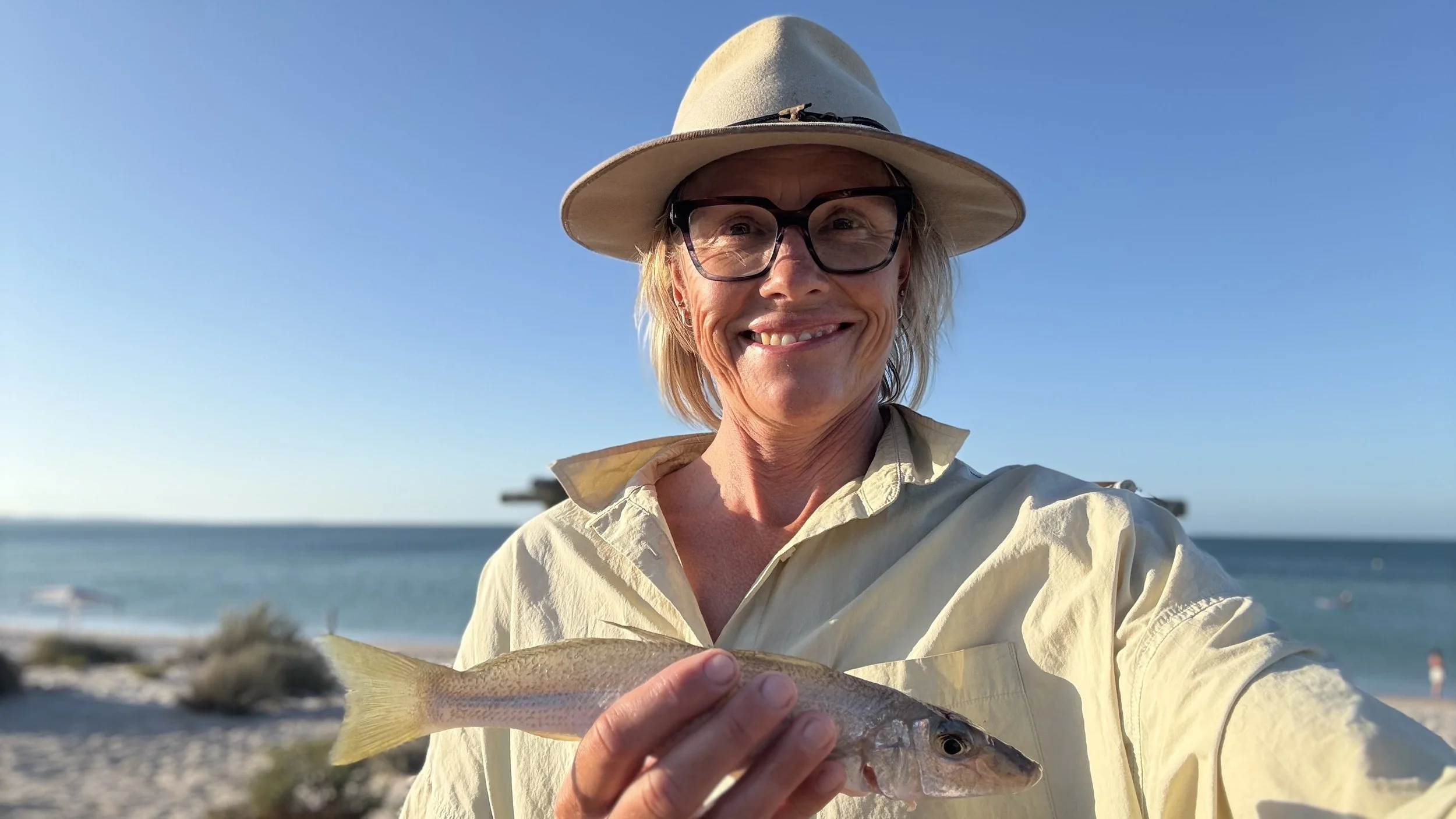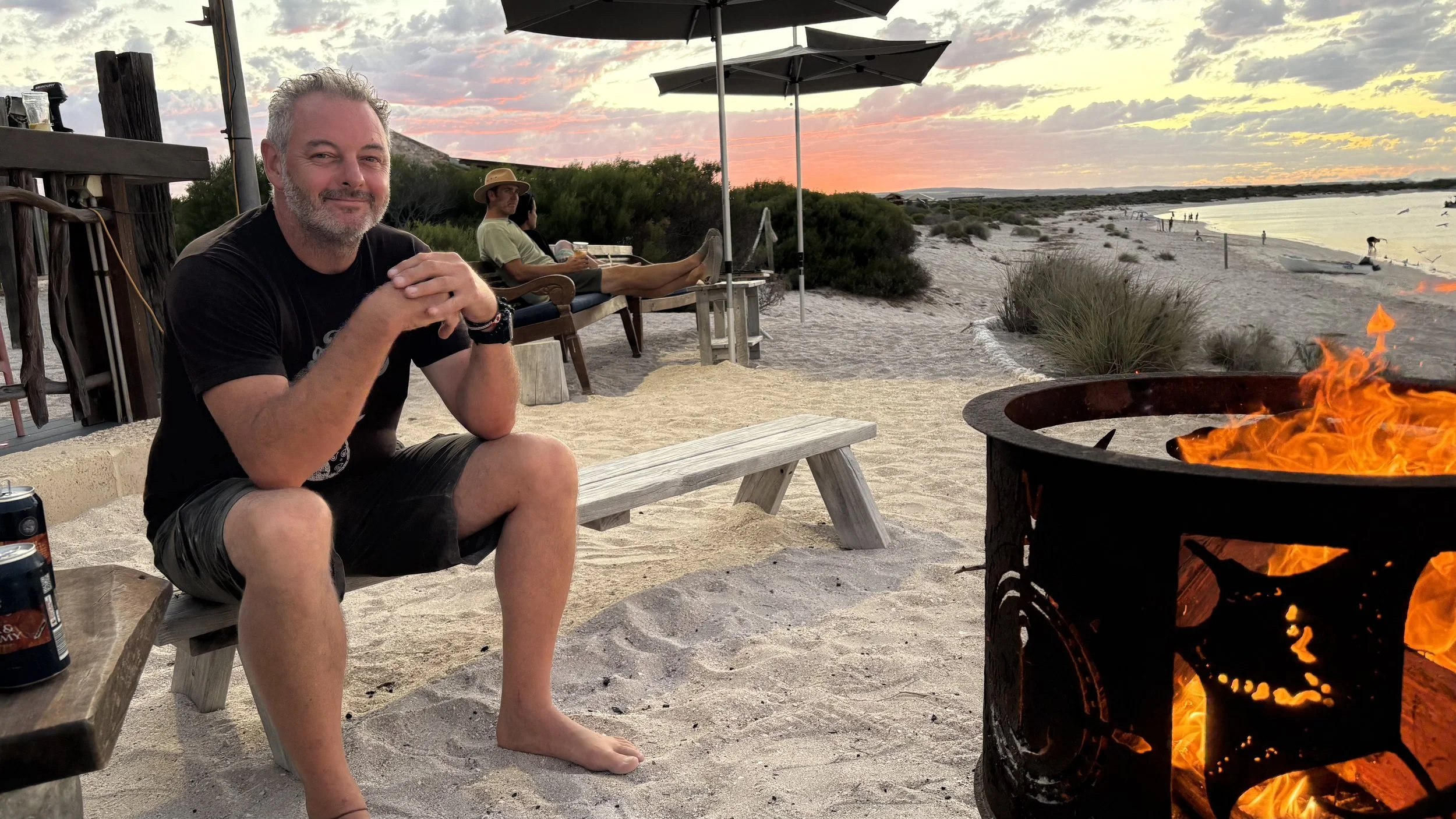Weeks 8 + 9 Wirruwana – Dirk Hartog Island
Dirk Hartog Island is the story of the beginning of European contact with this great South Land.
In January 1616, Dirk Hartog left the Netherlands for the East Indies on the Eendracht. They travelled down to the Cape of Good Hope then headed east using the winds and currents of the roaring forties, sailing one thousand Dutch miles before turning northward to Makasser. He happened upon the northern cliffs of an island, Wirruwana for the Malgana traditional owners, or Dirk Hartog Island, on October 25, 1616. They spent two days here before sailing up the western coast to the East Indies.
During their time here, a party went ashore, climbing the cliffs at Cape Inscription, leaving a message on a flattened pewter dish nailed to a post and stuck in a cliff. It included information about who they are, where they had been and where they were going, assuming was that in the future, other mariners would find the message. In 1697, Willem de Vlamingh came ashore, found the flattened dish, rewrote Hartog’s inscription on a new dish and left this with his own inscription on the island.
Fast forward a couple of centuries, the island was used pastorally from the 1860s to the early 2000s. The sheep farming, along with introduced plant species, goats and cats, decimated the native mammal population and habitat.
As recently as 2009, the West Australian government purchased the privately held pastoral lease to turn the majority of the island into a national park and the Department of Biodiversity, Conservation and Attractions (DBCA) is now working on the Return to 1616 project, an ecological restoration project that has eliminated the feral animals and reintroduced many of the native animals lost to the island.
I can’t imagine what Dirk Hartog thought of the rocks at the northern cape, in this remote, wild and stunning landscape.
https://museum.wa.gov.au/explore/dirk-hartog
Dirk Hartog Island is the story of wilderness: wild life, wild fishing, a wild landscape.
From the moment we arrived, we saw life everywhere. A yellow snake lay languidly across the track within ten minutes of being on the island. The Stimson python casually turned and slithered off the track after we marvelled at it for a few minutes.
There is abundant life in the ocean and air, and the deeper you explore, the greater the reward. At Louisa Bay, we paddled in the packraft inspecting the south end and found a beach and a cave tucked into the craggy headland with nests, (osprey or eagle? I can’t tell the difference) and snake skeletons, in various stages of decomposition.
At each of our three camp spots on the island, we saw the sea teeming with life: reef and shovelnose sharks, stingrays and manta rays, turtles, and loads of fish. There were a lot of birds, including osprey and eagles, terns and oyster catchers. The snorkelling highlight was at Turtle Bay with excellent visibility and diverse and plentiful fish life. We admired a striking black and white sea snake exploring the rocks and reef. It was like swimming in an aquarium.
The single track on the island is narrow and encroached on by heath and bush, with a lot of dune driving, sand tracks and rocks. The beaches are stunning: more white sand and turquoise water and dramatic cliffs particularly on the western side where the island and Indian ocean butt against one another.
Up and down the western coast are blowholes, small and large, water and spray puffing, spurting up through the holes in the rocks, even in small surf. We visited an incredible natural bridge, with no signs, track or boardwalk to help locate it. A fisher we met, Jamie who was camping at Urchin Point, showed us on google maps giving us very specific directions, as did Ecolodge owner, Kieran.
There is a cairn on the western side of the track, the only marker for this spectacular natural wonder. We followed Jamie and Kieren’s directions, walking the kilometre or so in 35 degree heat, through the low-lying scrub and brush, over the rocks and sand to roughly where we thought it would be. We were pretty close – when we hit the cliffs, Jeremy threw up the drone to see exactly where it was.
The bridge is around 30 metres long and five metres thick, sitting proud over a grand open cavern in the rockshelf, water surging in and out from the ocean under the bridge. It was mesmerising and we spent an hour sitting on the cliffs, feeling the powerful swell buffet the ancient limestone. The landscape is rough and rugged, more how I imagine the moon than the edge of an island.
Dirk Hartog Island is the story of connection.
How many lovely people did we meet at this place? Jodie and Brad, the camp hosts, and Lauren, who is working here for her second season, were the first people to greet us when we arrived at the Homestead. They were quick with laughter and a quip, and generous with the information about this incredible place. They also plied us with coffee and, with a few shots under our belts, we headed north, armed with a better sense of the place.
We were told that it is pretty normal to stop and chat with everyone you pass on the way up and down the island. One of our first conversations was with Jo and Sean from Newcastle. As it turned out, we would be camping at the same spot together the following two nights. We’d decided not to take the camper trailer onto the island, to camp in the tent instead, conserving fuel and making travel in a way we thought would be easier. Sean and Jo were in their camper and we shared many chats about 4WDing, remote travel and commiserating over car issues, and bemoaning our lack of camper! Life in a tent is more challenging than life with a camper trailer.
The night before we caught the barge onto the island, we camped at Shelter Bay, beside James who we met at Sandy Cape, and his two mates Jimmy and Ryan. They were spending a week fishing off the cliffs at the Block, a camp site on the north-western side of Dirk. They told us about the helium they had for their fishing, the balloons they would use and they gave me bait for my burgeoning fishing career. Lovely blokes. And they told us to drop in when we headed to the top.
North of the Block is the campsite Urchin Point, another excellent location for cliff fishing, although at this stage I didn’t understand how you fish from a cliff. How long are the rods? Do you cast from a great height? How do you reel in a fish up a cliff face? Why helium?
At Urchin Point we met Jamie, Lee, Jason and two others, there for some serious fishing. As at the Block, there is a rustic shack for campers. We drove by and stopped, asking Jamie if we could have a look at the set up. The three who were having a break from fishing that afternoon proudly showed us around explaining how it works: helium balloons carry the line with the bait onto the ocean. The wind picks up and drops the balloon, causing the bait to skip along the surface, attracting mackerel, marlin and other big fish. It was crazy to see it in action at both the Block when we visited James, Jimmy and Ryan, and the boys at Urchin point. West Australians take their fishing very seriously.
These are West Australian men, who stand from sunup to sundown on cliffs, mackerel fishing with helium and balloons, with mates and beers, sheltering in shacks, laughing and telling stories. For the love of fishing, their state, the outdoors. Generous, gregarious fishers, exposed in the elements, loving it, surviving the landscape, covered head to toe in sun protection, and laughing.
We would see both groups back at the Homestead on their last night on the island, share a few drinks and stories at the bar, which Jody told us is the usual routine each afternoon on the island. Campers return to share their adventures at sunset at the bar.
When we arrived back at Salty’s campground at the Homestead for our final nights, we made good use of the camp kitchen, a great place to meet other travellers. And each of these people reminded me that people are NICE. Friendly, kind and generous. We met Jolene and Chris, and their kids Preston and Leonardo, travelling from the Gold Coast. They’ve been travelling for around 18 months so far. Grandma Judy was also here, visiting from Brisbane.
Chris kindly showed me how to de-hook and gut a fish. I caught TWO fish at the beach here, a flathead which was too small and a whiting which was delicious. I was standing alongside Chris and Judy, with the kids chattering and helping.
We also met Fran and Craig from Darwin, and Lauren and Jared from Victoria travelling with their two children.
Waiting for the barge on our way off the island, we met Brendan and Lyn and their two daughters, arriving for seven nights camping and once again struck up a lively conversation. It’s true that we are all on holidays, but it is so nice to be reminded of the goodness in people.
Such a vibrant community.
What an opportunity to come to Dirk Hartog Island. It is very difficult to get to and it is a hard landscape to drive across. It requires a lot of planning (thanks Jeremy) and preparation but it’s definitely worth the effort. The history, the rugged landscape, the people.
I can now imagine a tiny part of what Dirk Hartog may have thought of that northern cape, in this remote, wild and stunning landscape.
